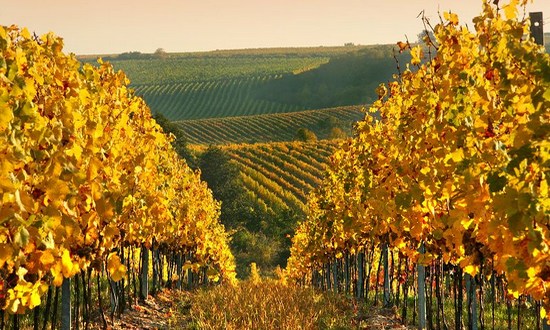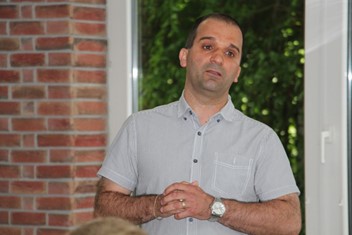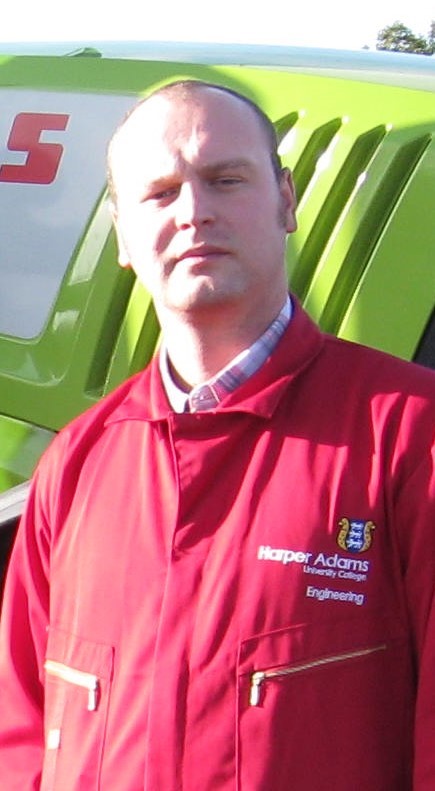By Ján Jobbágy and Koloman Krištof
The vineyard is grown on an area of approx. 8 mil. ha, while in the conditions of the Slovak Republic (Slovak Republic) it is currently grown on an area of 18,000 ha. The need for manual work is still high due to the selected cultivation technology, representing 400 to 600 h.ha-1 of fertile vineyard. One of the most demanding work operations in terms of labour is the collection of grapes, which accounts for up to 30% of the total need for working time (in practice approx. 120-160 h.ha-1). Harvesting is influenced by the input conditions, which may include meteorological factors, the health of the grapes, varieties, yield, type of line and planting clips and, finally, the total area of the harvested area. A phenomenon in recent years that has plagued many growers, not only in the wine sector, is the factor in the availability of labour and the associated cost of human labour. Gradual development and deployment of an increasingly modern application of technology negates this phenomenon. Not only according to us (the situation in our country over the last 10 years), but also according to other authors (Costa et al., 2019). Fully mechanized grape harvesting with the use of tractor-mounted or self-propelled harvesters is increasingly being used. The performance of the machine set is also in our case limited by the capacity of other equipment related to other work operations of further processing of grapes (reception of grapes, pressing plant, etc.). Therefore, even in the given company it is a gradual harvesting of individual varieties in connection with further processing.

Even after the establishment of the independent Slovak Republic, mechanized harvesting began to develop only very slowly and distrust in mechanized harvesting persists among grape growers until the present period. This is also one of the reasons why mechanized grape harvesting has been intensively monitored in the last 10 years. In addition to monitoring losses during mechanized collection, research work is also focused on manual collection. In our country, manual harvesting of grapes still prevails, and mechanized harvesting is only slowly expanding. This is caused by high procurement costs of technology, as well as the poor state of wine support settings in the Slovak Republic, when vine growers solve the dilemma of whether it still pays to grow vines at all and not invest in expensive equipment, as there is a problem with grape sales on the market.
In the past, agriculture employed almost 200,000 employees (1995), today it is up to 50,000 (SHMU, 2017). In the conditions of the Slovak Republic, the issue of the method of grape harvest and its economic evaluation is generally no one else except the research team from the University (SUA in Nitra), respectively. there is no such knowledge. Partially mechanized harvesting is so far the most widespread work procedure applied in the harvest of grapes. It is implemented mainly by small and medium-sized enterprises with growing areas, which are often scattered over several territorial units. Large companies use it mainly for over-harvest harvesting and for harvesting grapes intended to produce high-quality adjective wines. In the 1990s, winegrowing enterprises in the Slovak Republic solved the problems associated with transformation and privatization and had a relatively sufficient supply of cheap labour at their disposal (Jobbágy and Findura, 2013). Therefore, most investments were initially directed to the provision of cultivation technologies, the renewal and restructuring of vineyards and to processing technologies. However, it can be expected that the use of partially mechanized harvesting for large areas of vineyards will be very problematic in the future due to the permanent loss of seasonal workers, especially in terms of ensuring harvesting on schedule. The gradual loss of labour over the 90 years and the ever-increasing price of manual labour on the market forced growers to invest funds in the purchase of modern viticultural equipment to maintain the profitability of production. This moment was also the impetus for the first wave of use of grape harvesters in operational practice in the years 2000 to 2006, realized mainly by transformed agricultural cooperatives or private entities with large growing areas (Zemánek and Burg, 2010).

Gradual establishment of the latest grape harvesters has increased the demand for them in the last 10 years. The original required machines were outboard, because they were cheaper and more affordable and aggregable with tractors (this also applied to medium-sized enterprises – about 30 ha of vineyards). Gradual development also introduced services, which began to be used by smaller companies. The relevant shortage of grapes on the market in 2010 and the consequent effort to be as independent as possible from the supply of grapes from domestic growers led large wine producers to purchase large areas of cultivation and to gradually restructure them. This fact caused in the following years an increased demand, especially for multifunctional carriers enabling to perform, in addition to fully mechanized collection, also other operations, especially chemical protection. Over the course of ten years, the share of fully mechanized grape harvest in the total volume of harvesting operations in viticulture has increased several times in the Slovak Republic.
The issue of monitoring costs depending on the annual deployment of collectors in confrontation with the costs of collection provided in the form of services and the costs of partially mechanized collection using other means of collection is a part of the solution of the research team from the university. The efficiency or effective area varies depending on the country (price of human labour, price of grapes and price of machinery) and can range from tens of hectares of fertile vineyard area. The results will also be different when using a self-propelled or mounted grape harvester converted into unit items. The effective use of self-propelled grape harvesters is significantly influenced by the possibilities of their use during the season as portal carriers of tools, especially in chemical protection, pruning of plants, pruning of vines, or in other operations.
In recent years, mechanized grape harvesting and processing has also advanced in Slovak viticulture. From the original three grape harvesters, their number has increased to more than 15 in the last 15 years. On the other hand, the prejudices of some older and especially smaller winegrowers are quite negative against the mechanization of harvesting. Over the last decade, the qualitative level of mechanization of grape harvesting has clearly increased.
The research activity of the research team from the university is aimed at evaluating the efficiency of the use of the (towed) trailed grape harvester in the conditions of Slovak viticulture, both from a technical point of view and from an economic point of view. The technical evaluation consisted of monitoring post-harvest losses caused by non-harvesting or falling into the soil. However, by changing the shaking parameters (number of oscillations), a reduction in losses was achieved. Therefore, it can be said that by monitoring the process of collection and the occurrence of losses by non-harvesting or overflow, it is possible to achieve a higher quality of work with the function of setting and fine-tuning. The evaluation of mechanized collection can be considered effective only if lower unit direct costs than the available market unit price of labour (in the form of services) are achieved after all input costs for a specific area have been included. After the economic evaluation of mechanized collection, where the costs of operating the machine consist of fixed and variable items (the largest of which in the new technology is the purchase price), the minimum area for effective deployment was determined. From the results it is possible to conclude that in the conditions of Slovak viticulture, even in small areas, it is currently the most appropriate solution to purchase harvesting equipment from several companies or to perform services in addition to harvesting their own vineyards. More information at: https://www.mdpi.com/2076-3417/11/10/4621

Ján Jobbágy 
Koloman Krištof 
Ján Jobbágy. Head of the Department of Machines and Production Biosystems, SUA Nitra. He is a university professor in the field of mechanization of agricultural technology at the Slovak University of Agriculture in Nitra, where he focuses his activities on two important areas. One of them is the area of viticulture and viticulture focused on evaluating the use of technology and efficiency not only of the grape picker, but also of the vineyard tractor. I focus my activities on evaluating the quality of work of the line for finalization and adjustment of wine. The second area is the modernization of irrigation technology and the deployment of modern irrigation technologies, evaluation of selected physical properties of soil and monitoring of moisture content in soil. He is the leader of an educational project focused on the field of viticulture and viticulture. He completed his university studies in mechanization in the field of agriculture in 2003 (MSc.) and obtained a doctorate in this field in 2007 (PhD.).
Koloman Krištof. He works as a university teacher / assistant professor at the Department of Machines and Production Biosystems / Faculty of Technology / SUA in Nitra. Since graduating from the 2nd degree (MSc.), he has worked as a research and development worker for 2 years at the Research Institute of Soil Science and Soil Protection in Bratislava and then for 2 years as a researcher at the Research Institute of Plant Production in Piešťany. Since 2008 he has been working at TF – SPU university teacher / assistant professor where he received his doctorate in 2012 (PhD.). During this period, he completed a research internship and subsequently a year of study at Harper Adams University (Shropshire, Newport) in Great Britain. It is scientifically focused on the mechanization of agricultural production, the environmental impact of agricultural technology, processing and use of targeted cultivated agricultural biomass for energy purposes and processing agricultural waste for energy use and conversion of energy from its various forms to others.
References
- Costa Neto,W.V.; da Elorza, P.B.; Garrido-Izard, M. Impact of local conditions and machine management on grape harvest quality. Sci. Agric. (Piracicaba Braz.) 2019, 76, 353–361.
- Jobbágy, J.; Findura, P. Mechanization of Viticulture, 1st ed.; Slovak University of Agriculture in Nitra: Nitra, Slovakia, 2013; 165p.
- Prognosis 2017. Prognosis of the Labor Market in Slovakia II. Comprehensive Analysis of Employment and Verification of Forecasts in 2017. Available online: https://www.employment.gov.sk/files/slovensky/praca-zamestnanost/podporazamestnanosti/komplexna-analyza-zamestnanosti-verifikacia-prognoz-roku-2017.pdf (accessed on 14 April 2021)
- Zemánek, P.; Burg, P. Evaluation of mechanized grape harvest. Acta Univ. Agric. Silvic. Mendel. Brun. 2005, 53, 191–194.

